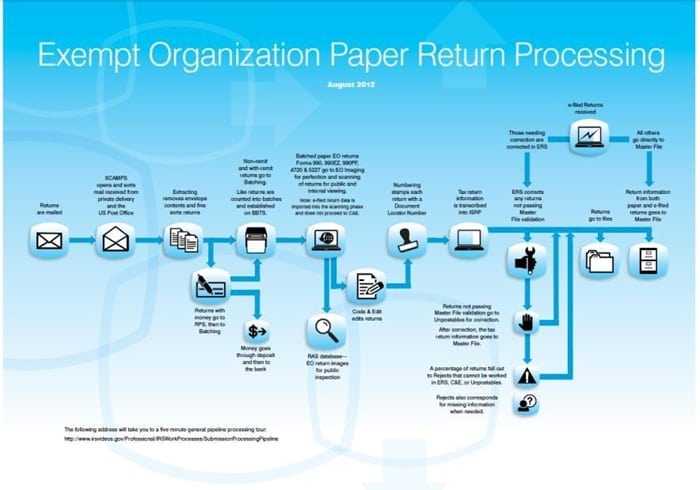Originally published by Impatient Optimists
…
Last month, the Aspen Institute hosted a forum where they released a new report entitled “Information for Impact: Liberating Nonprofit Sector Data.” The report by researchers Beth Noveck and Daniel Goroff focuses on how the U.S. currently collects, digitizes, and distributes data about charities through an annual reporting return called the Form 990 and on ways that this system might be improved.
When asked to speak about report, I was reminded of an article that Putnam “Put” Barber – a nonprofit scholar and advocate at the University of Washington – had recently shared with me. Put’s article indicated that several groups were “planning to help charities regularly use data from the new Form 990 to assess their own financial management performance…. Comparative data will be based on computerized data from the new 990…. The objective is to make the application of philanthropy’s revenue and assets more cost effective in benefiting the public.”
The language seems straight out of “big data” and “open data” stories today. But the date of the report was actually June 9, 1982 – more than 30 years ago.
At the Aspen Institute event, I shared the story about the 30-year old article as a reminder that “liberating nonprofit data” is a longstanding topic and issue, and that while our sector has made progress – creating institutions like GuideStar, Foundation Center, and the National Center for Charitable Statistics for example – it is often slowly. In the social sector, the arc of history is long but it bends toward transparency and open data.

Today’s social sector’s “information infrastructure” is underdeveloped. Basic building blocks for exchanging data and knowledge are missing or not widely adopted. Public and philanthropic resources go into cleaning, digitizing, and redigitizing very basic data (as the Aspen Institute report suggests), leaving even fewer resources for deeper analysis and data visualizations. The same information often must be reported in different formats to different sites and funders, increasing the costs and headaches for charities. We are exploring these and other topics more on the Markets for Good website, a collaborative effort with LiquidNet, the William & Flora Hewlett Foundation, and numerous other partners.
To solve some of our society’s deepest challenges, we should be building sources and mashups of information for:
- Who funds what where?
- What works? Or more specifically, what works where?
- Where might more money, more people, or more political will make a difference?
This was an underlying theme of Bill Gates’s annual letter released last month as well – which talked about how the digital revolution was improving the use of measurement in fields as wide-ranging as polio, teacher effectiveness, and development generally, and contributing to dramatic improvements in the human condition around the world.
There are many reasons why we should not focus solely on the Form 990 as the basis for improving the sector’s information infrastructure. The Form 990 is a compliance document – designed to show sources of revenue, basic allocation of expenses, a summary of activities. It seeks to eliminate fraud & abuse and promote adherence to legal requirements – not necessarily to advance performance. And as the report highlights, there are issues of accuracy, quality, timeliness, and consistency that make it generally poorly suited as an instrument for improving impact.
But perhaps this is exactly the kind of “shovel-ready” information infrastructure project we should get behind. If we can accelerate progress around the way that Form 990 information is collected, cleaned, and shared, we might build or strengthen some of the muscles and relationships needed to work together in the sector for higher aspirations. Then we would have the makings of a cross-sector coalition that could help transform not simply the way that the Form 990 is digitized and distributed, but the way that information about the activities and impact of charities, foundations, and the social sector more generally flows.
